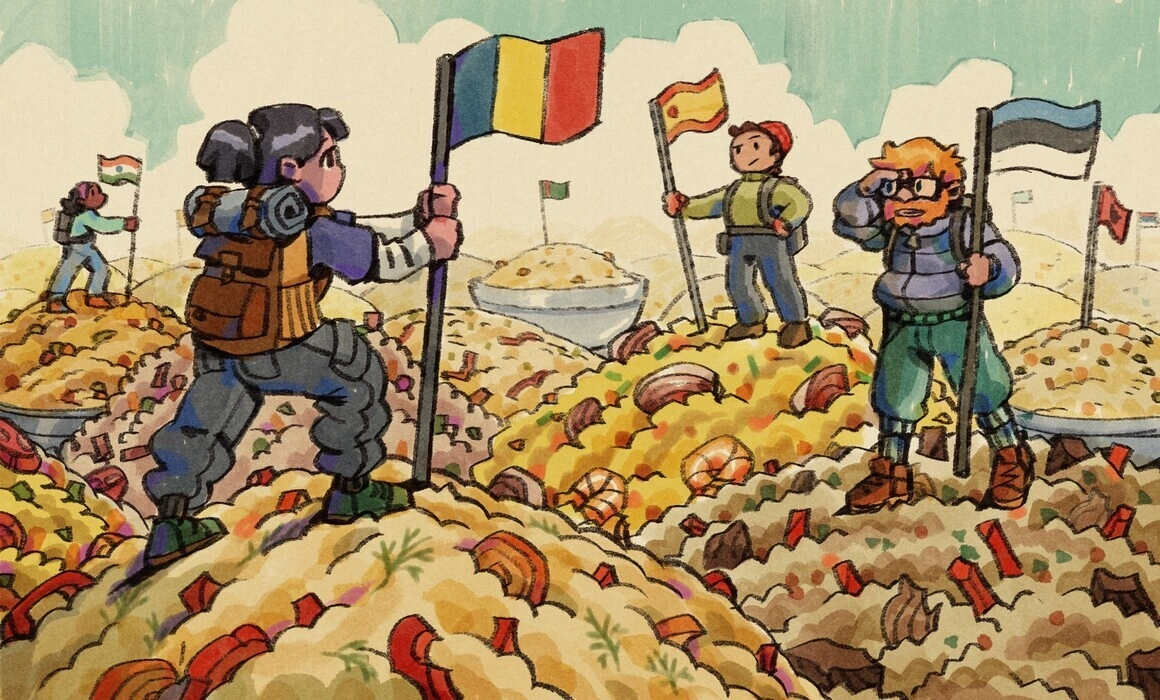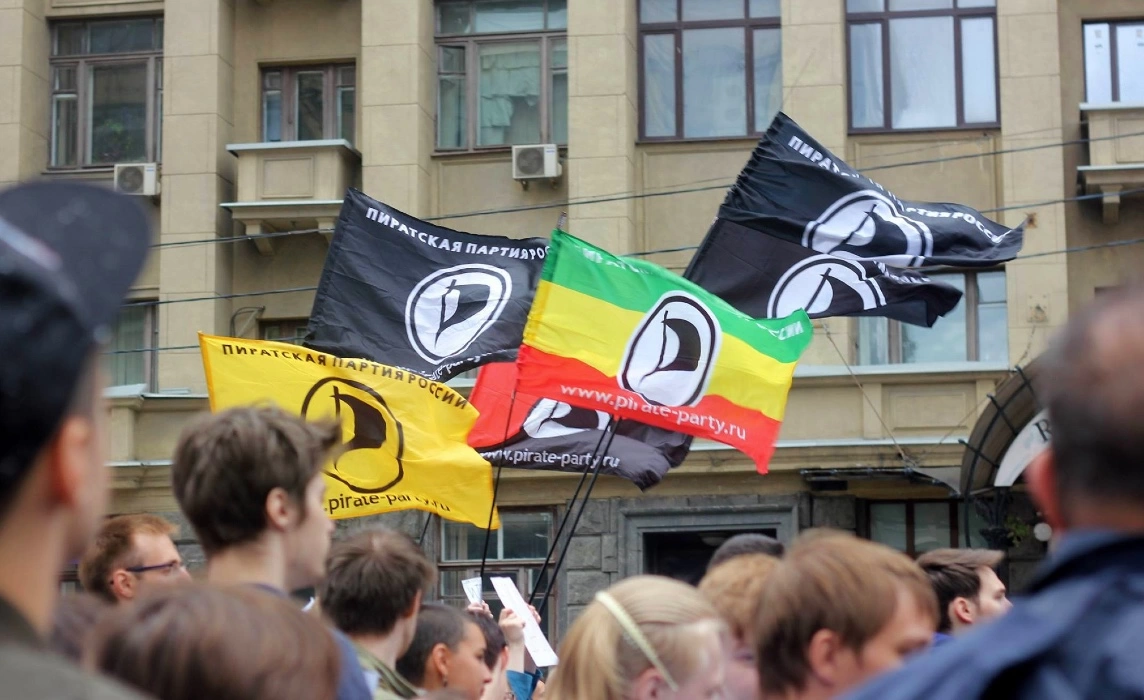From plov to pilaf, hundreds of versions of the basically-same-dish are a testimony of influences of civilizations and culinary memory, from Central Asia to Eastern and South-Eastern Europe, through several empires.
As a child in communist Romania of the 1980’s, I remember pilaf was one of the staples in the Ottoman-influenced cuisine of the south of the country. My mother and my grandmother used to put it in the oven, after briefly boiling the rice on the stove. Made with chicken (from the countryside, of course, as on the shelves of the stores it was unheard of during the economic crisis of the 80’s), or with mushrooms (when available), or even with nothing (as “nothing” was largely available in the 80’s, unlike chicken or mushrooms), pilaf was – and still is – an easy-to-make, affordable and filling dish.
Back then, we had no idea about the origins of pilaf, nor other staples of Romanian cuisine, as no one was concerned with the contextualization of what we could (and especially could not) eat under Ceaușescu’s regime. Moreover, in an autarchical country, as communist Romania used to be, how could we have known that Greek or Turkish children were fed with pretty-much-the-same pilaf by their moms and grandmas?
Years later, when faced with this reality, I became furious thinking that Greek and Turkish mums and grandmas had stolen the recipe of such an emblematic Romanian dish. Then, I started digging into its history.
Very often, it is hard to explain why and how a certain dish has survived in the memory of a community, while others did not. Well, pilaf did survive in Romania and South-Eastern Europe, along with numerous other dishes of Ottoman provenance, maybe because of the affordable and cheap main ingredients (rice, vegetables) and basic cooking techniques.
The origins of pilaf could (arguably) be traced back to Alexander the Great, and as far as East Turkestan, home of the Uyghur people. In his book Cumin, Camels, and Caravans: A Spice Odyssey (University of California Press, 2014), Gary Paul Nabhan writes the following: “In the fourth century BCE, Alexander the Great and his troops became so taken with Bactrian and Sogdian pilafs that they reportedly took the preparation back with them from the Sogdian capital of Marakanda (present-day Samarkand) to Macedonia. But the first detailed description of how to prepare a pilaf properly came to us during the tenth century from Ibn Sīnā, known to the Western world as Avicenna. Because of his enormous influence, Ibn Sīnā is considered by many to be the father of modern pilaf preparations.”
Pilaf has several (related) names, depending on the region or country: polov in Central Asia, where it is ubiquitous, from East Turkestan (present-day Xinjiang) to all the five ‘stans: Kazakhstan, Kyrgyzstan, Tajikistan, Turkmenistan and Uzbekistan. Russians call it plov and introduced it all around the Soviet Union, all the way to the Baltic states, Belarus, and Ukraine.
On a website dedicated to Estonian cuisine, we can learn, for instance, that plov is
“a foreign dish that throughout the years has become more and more popular in Estonia to the point […] of being part of our national cuisine. [...] Originally, it’s a dish from the Middle East / Central Asia that has gone through a long journey from south to north to our dinner tables. With some touches of local seasoning and ingredients, plov has become one of the most common everyday meals in Estonia. As Estonians love pork so much, one of the main ingredients of the Estonian plov is definitely pork.”
Lithuanians too seem to love pilaf, as stated on a cooking website for Lithuanian food:
“Who could refuse a bowl of evaporating and delicious pilaf? In Lithuania it would be probably difficult to find a Lithuanian who wouldn’t like pilaf. Although pilaf is especially popular in many Asian, Balkan and other neighbouring countries, Lithuania is not an exception […] (although it’s neither Asia nor the Balkans). Perhaps pilaf adapted very well to Lithuanian cuisine due to its simple preparation and for the fact that after eating a bowl you get a feeling of satiety very quick.”
In Belarus and most of Ukraine, plov most probably arrived with the Soviets, but in Romania and Moldova it is a completely different story, just as it is in Crimea in South-Eastern Ukraine (former Crimean Khanate).
As vassal states of the Ottoman Empire for over 400 years, the eastern and southern part of Romania were penetrated by huge amounts of Turkish habits, including culinary ones. The same pattern applies to Bulgaria, Greece, and countries of the Western Balkans (Albania and former Yugoslavia); as well as Georgia, Armenia and Azerbaijan.
Despite the fact that it has the same origins as the one spread across the former USSR and more or less the same cooking process, pilaf arrived in South-Eastern Europe several centuries before the Baltic states, Western and Northern Ukraine or Belarus. Depending on the country / region / community, it can be prepared with or without pork: with pork by Christian communities; without pork by Muslim ones. Poultry is also widely used (especially chicken) and plenty of vegetarian versions exist as well.
In Romania, it is sometimes called Serbian pilaf and is usually cooked in the oven, unlike the Central Asian versions, which are only cooked on open fire (on the stove). As for the ingredients, I never remember my mum or grandma using mutton, as they do in Central Asia.
During the 19th century, the Principalities of Wallachia and Moldova turned towards Western Europe and away from the Ottoman Empire. A cultural revolution took place especially during the second half of the 19th century, when most of the oriental habits were discarded and replaced by occidental ones. France became the sacrosanct model to be followed and, from then on, the sun would shine from Paris, replacing the setting sun which, until then, rose in Istanbul.
However, while the region was discovering its Latin roots, most of the daily cuisine of the ordinary people remained – and still is – anchored into the Ottoman Empire. As Romanians consider themselves part of the Latin family in terms of language and origins, they are much closer to the Serbs, Bulgarians, Albanian or Greeks in terms of food habits. Different yet similar to the Balkan peoples, Romanians do not necessarily realise how close they are to their neighbours when talking about traditional dishes.
Transylvania, as a result of it being part of the Austro-Hungarian Empire until the end of the First World War, was subject to the Ottoman Empire for only about 100 years, so the influence of Ottoman customs did not have such a great influence here. Pilaf most probably arrived to Transylvania via the Romanian population – it is mentioned in a 1928 cooking book (Ana Victor Lazăr, Bucătăria gospodinei de la sate. Sfaturi şi reţete de mâncări, Sibiu, Editura Asociaţiunii Astra, Sibiu, 1928), when Transylvania had already become part of the Kingdom of Romania.
This staple dish also has other versions, more or less different / close to the plov-pilaf. In the Indian subcontinent, biryani uses the same principle of preparing rice together with meat and / or vegetables. The main difference is that, whilst the “classical” versions of plov-pilaf are not very rich in spices, biryani contains tens of them, so that a raita yoghurt-based sauce is more than welcome to serve it with, in order to appease the heat of the chilies.
Kabuli palaw is a famous dish in Afghanistan and Pakistan. It is mouth-wateringly adorned with carrots, raisins, almonds, pomegranate seeds, walnuts, pistachios, that you have the feeling of coming across a treasure in the Cave of Ali Baba. A similarly embellished version exists in Iran as well, with some cooking books naming it Jewelled Rice (Michael Bateman, The World of Spice, Kyle Books, London, 2004), although Iranians usually have it rather simple – be it boiled or cooked in the oven.
Spanish paella is another version of the dish, whose possible origins are in Muslim Spain (El Andalus). The Moors introduced rice cultivation in the Iberian Peninsula around the 10th century, and by the 15th century rice had become a staple. Paella can be made with meat, chicken, fish or seafood. The ingredients are boiled with vegetables and saffron. The latter gives the paella its distinctive orange colour, which, together with the al dente texture of the rice, could make us consider it a distant relative of the plov-pilaf family.
If it were to draw a map of the expansion of the pilaf from Central Asia to Europe, two main routes would stand out: a northern one, via the USSR; and a southern route, which took place centuries before the northern one, via the Turkic peoples (mainly Seljuks and Ottomans). No matter the route, pilaf definitely belongs to the gastronomic heritage of all the peoples who still love it to such an extent that Uzbekistan had it inscribed in 2016 on the UNESCO Representative List of the Intangible Cultural Heritage of Humanity.
A Romanian-language version of this text can be read here.




